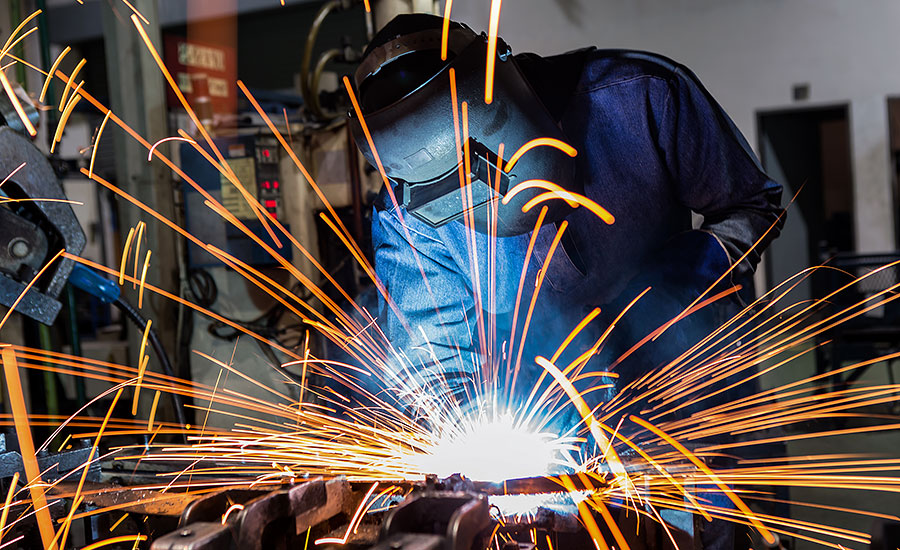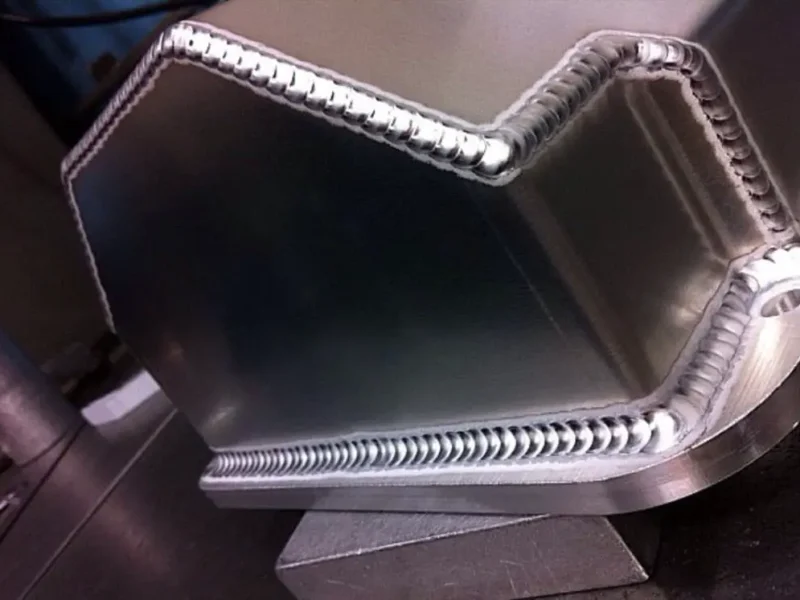Welding is a fundamental process in metalworking and fabrication, playing a pivotal role in industries ranging from construction to aerospace. Over the decades, welding technology has evolved significantly, transitioning from traditional methods to advanced techniques like orbital welding. This evolution has not only enhanced efficiency but also improved the quality and precision of welds, meeting the growing demands of modern engineering and manufacturing.
Early Welding Techniques
The origins of welding can be traced back thousands of years, to when humans first began joining metals through rudimentary processes. The following are the earliest known welding techniques:
Forge Welding
- Practiced as early as 2000 BCE, forge welding involved heating two pieces of metal in a forge and hammering them together.
- Blacksmiths used this method extensively to create tools, weapons, and other metal items.
Soldering and Brazing
- Around 1000 BCE, soldering and brazing were developed for joining metals at lower temperatures using filler materials.
- These techniques were widely used in making jewelry and intricate metalwork.
While effective for their time, these methods were labor-intensive and lacked the precision required for modern applications.
The Advent of Modern Welding (19th Century)
The industrial revolution brought significant advancements in welding technology. The discovery of electricity in the 19th century paved the way for more efficient and precise welding methods:
Electric Arc Welding
- In 1800, Sir Humphry Davy demonstrated the electric arc, which led to the development of arc welding.
- By the late 1800s, Nikolay Benardos and Stanisław Olszewski patented the first practical arc welding method, using carbon electrodes.
Gas Welding
- In the early 20th century, oxy-acetylene welding became a popular method for joining metals.
- It provided a portable and versatile solution, particularly for fieldwork and repairs.
Resistance Welding
- Developed in the early 1900s, resistance welding used electrical resistance to generate heat for welding.
- This technique became essential in the automotive industry for assembling car bodies.
Mid-20th Century Advancements
The 20th century saw the rise of automated and specialized welding processes, driven by the needs of World War II and rapid industrialization:
Shielded Metal Arc Welding (SMAW)
- Introduced in the 1930s, SMAW (stick welding) used a consumable electrode coated with flux.
- It became a widely used method for its simplicity and versatility.
Gas Tungsten Arc Welding (GTAW/TIG)
- Developed in the 1940s, TIG welding used a non-consumable tungsten electrode and inert gas (argon or helium) for shielding.
- This method offered precision and was ideal for welding thin materials and non-ferrous metals.
Gas Metal Arc Welding (GMAW/MIG)
- Also developed in the 1940s, MIG welding used a consumable wire electrode and inert gas for shielding.
- It provided faster welding speeds and became a standard in manufacturing.
Submerged Arc Welding (SAW)
- Introduced in the 1930s, SAW involved feeding a consumable electrode under a blanket of flux.
- It was used extensively for large-scale projects, such as shipbuilding and pipeline construction.
Computerization and Automation (Late 20th Century)
With the advent of computers, welding technology entered a new era of automation and precision:
Robotic Welding
- Introduced in the 1960s, robotic welding automated repetitive tasks, improving efficiency and consistency.
- It became a staple in industries like automotive manufacturing.
Plasma Arc Welding (PAW)
- Developed in the 1960s, PAW used a high-temperature plasma arc for precision welding.
- It was ideal for aerospace applications and welding exotic metals.
Laser Welding
- Introduced in the 1970s, laser welding used concentrated light beams to join materials.
- It provided unparalleled precision and became popular in electronics and medical device manufacturing.
Orbital Welding: The Modern Revolution
Orbital welding represents one of the most significant advancements in welding technology. This automated process involves rotating a welding tool around a stationary workpiece, ensuring consistent and high-quality welds.
How Orbital Welding Works
- A programmable welding head rotates 360 degrees around the joint, guided by computerized controls.
- Inert gas shielding (typically argon) protects the weld from contamination.
Advantages of Orbital Welding
- Consistency: Eliminates human error, ensuring uniform weld quality.
- Precision: Ideal for welding small-diameter pipes and tubing.
- Efficiency: Reduces welding time and increases productivity.
- Versatility: Can be used on a wide range of materials, including stainless steel, titanium, and nickel alloys.
- Safety: Minimizes welder exposure to hazardous conditions.
Applications of Orbital Welding
- Aerospace: Fabrication of lightweight and high-strength components.
- Pharmaceuticals: Welding sanitary tubing for cleanrooms.
- Oil and Gas: Joining pipelines and high-pressure systems.
- Power Generation: Manufacturing nuclear reactors and heat exchangers.
- Food and Beverage: Ensuring hygienic welds in processing equipment.
Future Trends in Welding Technology
The evolution of welding technology continues to accelerate, driven by advancements in materials science, automation, and artificial intelligence:
Additive Manufacturing (3D Welding)
- Combines welding with 3D printing to create complex metal components layer by layer.
- Revolutionizes manufacturing by reducing material waste and production time.
AI-Powered Welding Systems
- Incorporates machine learning to optimize welding parameters in real-time.
- Enhances defect detection and quality assurance.
Hybrid Welding
- Combines multiple welding techniques (e.g., laser and arc welding) to achieve superior results.
- Increases speed and precision while reducing costs.
Green Welding Technologies
- Focuses on reducing energy consumption and emissions.
- Development of eco-friendly shielding gases and welding processes.
Challenges and Opportunities
While welding technology has advanced significantly, challenges remain:
- Skill Gap: The need for skilled operators to manage automated systems.
- Cost: High initial investment in advanced equipment.
- Material Complexity: Welding new alloys and composites requires ongoing research.
Despite these challenges, the opportunities are immense. Advanced welding technologies are enabling the creation of safer, stronger, and more efficient structures, driving innovation across industries.
Conclusion
The evolution of welding technology reflects humanity’s relentless pursuit of progress. From traditional forge welding to the precision of orbital welding, each advancement has expanded the possibilities of what can be achieved with metal joining. As technology continues to evolve, welding will remain a cornerstone of industrial development, shaping the future of manufacturing, construction, and beyond.


